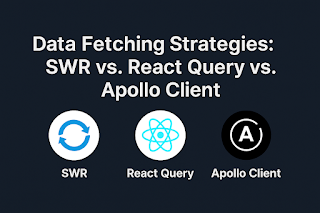The Rise of Headless CMS: Strapi, Contentful, Sanity
As web development continues to evolve rapidly, the demand for flexibility, performance, and scalability has led to a new era of content management systems: Headless CMS. Unlike traditional monolithic CMS platforms like WordPress or Joomla, headless CMS decouples the frontend from the backend, giving developers the freedom to build user interfaces with modern frameworks such as React, Vue, or Angular.
In this post, we'll dive into the rise of Headless CMS platforms and take a closer look at three popular contenders in this space: Strapi, Contentful, and Sanity.
What is a Headless CMS?
A Headless CMS is a content management system that provides content via an API (usually REST or GraphQL) rather than rendering it through a built-in frontend. The “head” — the presentation layer — is separated from the “body” — the backend where content is created and managed.
This separation brings a lot of benefits:
- Frontend freedom (use any framework)
- Better performance via static site generation or client-side rendering
- Multi-platform content delivery (web, mobile, IoT, etc.)
Why Headless CMS is Gaining Popularity
- Developer Experience: Build frontends with tools you love.
- Omnichannel Delivery: Deliver content to multiple platforms.
- Scalability: Easily handle high-traffic sites.
- Flexibility: No tight coupling to a specific technology stack.
Meet the Contenders
1. Strapi
Open-source and self-hosted, Strapi gives full control over your content, API, and hosting.
Pros:
- Fully customizable
- Built-in REST & GraphQL support
- Role-based access control (even in the community edition)
- Self-hosted, so you're in control
Cons:
- Requires setup and maintenance
- Hosting cost is on you
Best For: Teams that want full control and don’t mind managing infrastructure.
2. Contentful
A cloud-based and enterprise-ready headless CMS with a robust API and excellent documentation.
Pros:
- Fast and reliable
- Strong support for localization
- Great UI for content editors
- Rich text editing and media support
Cons:
- Pricing can get expensive
- Limited customization compared to open-source options
Best For: Enterprises or large teams that need a polished product and high reliability.
3. Sanity
Known for its real-time collaboration, customizable studio, and developer-friendly environment.
Pros:
- Real-time content updates
- Customizable Sanity Studio (React-based)
- Powerful query language (GROQ)
- Free tier with generous limits
Cons:
- Learning curve for GROQ
- Customization may be complex for non-devs
Best For: Teams that need real-time collaboration and full studio customization.
Use Cases for Headless CMS
- JAMstack Websites: Combine static site generators (like Next.js or Gatsby) with Headless CMS for blazing-fast performance.
- Mobile Apps: Use the same content API for both web and mobile applications.
- eCommerce: Pair with platforms like Shopify or Snipcart for a modern, decoupled storefront.
Conclusion
The shift toward Headless CMS reflects a broader trend in web development — modular, scalable, and API-driven architecture. Whether you're looking for open-source flexibility (Strapi), enterprise-grade performance (Contentful), or collaborative customization (Sanity), there's a solution tailored for your needs.
Adopting a Headless CMS is not just a technical decision, but a strategic one that can future-proof your content infrastructure.
#HeadlessCMS #Strapi #Contentful #Sanity #Jamstack #WebDevelopment #FrontEnd #APIDriven #CMSRevolution #ModernWeb




Comments
Post a Comment